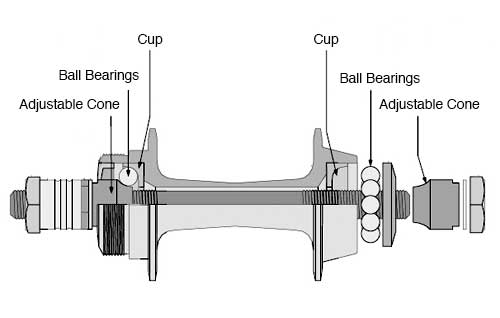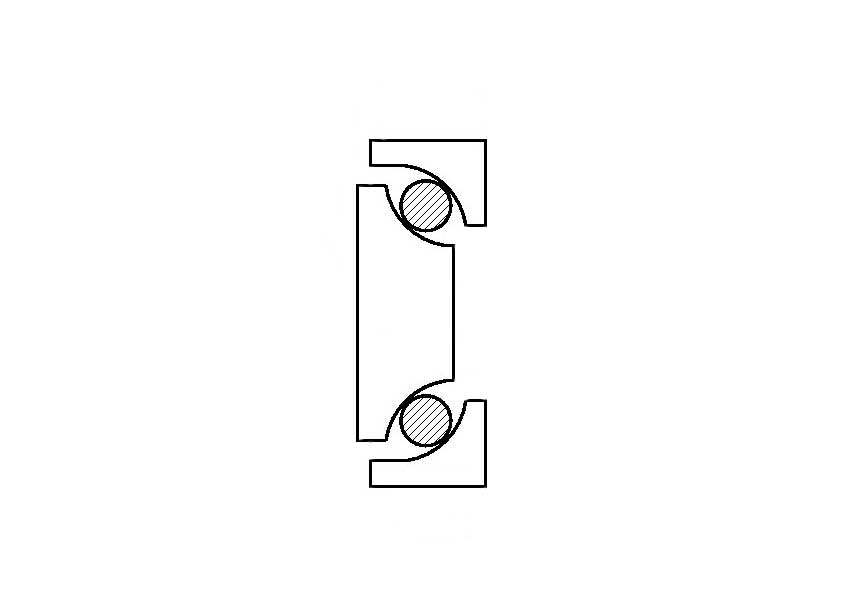I've landed in a physics debate amongst bike mechanics. In a typical bicycle hub you have a simple bearing; the cups are set in the hub, the race (cone) threads onto the axel and there are just loose ball bearings in between (no ball retainer). When properly adjusted, there is no play in the system, and the axel turns smoothly.
I imagine this is an elementary question, but when you put weight on the axel (rider on the bike) is the force concentrated on the bottom of the cone, or is it evenly distributed to all of the balls around the cone? What forces are at work in a bicycle hub?

I made this image for the sake of convenience if anyone feels so inclined to be awesome and use it to make a diagram/illustration:

